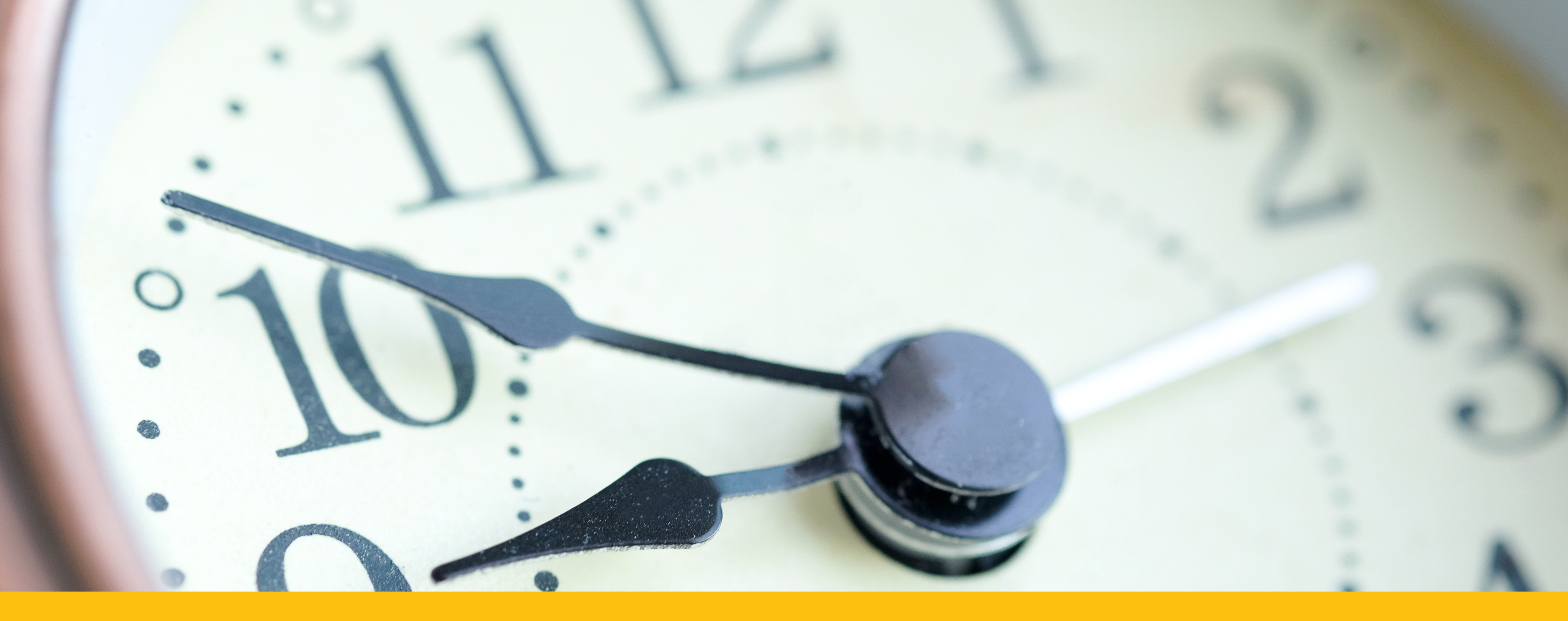Tuesday Time-Saving Tip: Closing Your Practice on Time

It’s normal to experience an occasional long day at work, but if leaving your dental office on time has become a thing of the past, maybe it’s time to rethink your day-to-day workflow. Leaving work late on a regular basis is not only frustrating, but you run the risk of missing or rescheduling events outside of the office. So, to ensure your dental practice runs more smoothly, here are seven tips that can increase your efficiency and help you leave work on time.
1. Begin with the End in Mind. Oftentimes, people tend to “go with the flow” of the workday, but if you’re not paying close attention, the day can pass you by. For administrators, it’s important to schedule and block off time designated for specific tasks. Setting hohrefy goals will help you stay on track and prevent an excess amount of work at the end of the day. Also, handling longer tasks, such as billing, earlier in the day can save you time in the long run.
2. Understand and Estimate the Length of Procedures (Realistically). Your longer workdays could be attributed to miscalculating time spent to perform dental procedures. Clinicians tend to misjudge procedural times by focusing primarily on the time they spend with patients. On the other hand, assistants tend to overestimate procedural times by considering the tasks performed before and after the procedure, i.e. room setup, break-down, lab work, and sterilization. The key to finding a middle ground is communication. Both the clinician and assistant should discuss the expected time frames for specific procedures. Knowing when to anticipate shorter or longer appointments—and possibly scheduling them earlier in the day—can help increase time efficiency.
3. Utilize Appointment Reminder Software. Reminding patients of appointments via phone is great for some but may not be useful to all. Texts or emails may reach someone faster who could be at work or preoccupied to where they cannot receive phone calls. There are a variety of benefits to using automated reminders, which include:
-
Reducing the number of no-shows
-
Increasing the number of patients who arrive on time
-
Decreasing the amount of time spent on the phone
-
Eliminating disruptions
-
Allowing cancellations to be made immediately
-
Sending reminders at anytime
-
Improving the patient experience
4. Re-evaluating the Patient Workflow. Patients begin to watch the clock from the moment they check-in until the moment they leave the exam room. It’s not uncommon for patients to spend well over an hour waiting for an appointment to conclude. Clinicians may not be able to alter procedural times, but other simple adjustments can be made to help your patients leave in a timely manner. By reworking the patient workflow, certain tasks can be tweaked to improve time efficiency. A few examples would include:
-
Restructuring patient check-in forms
-
Updating patient management systems
-
Adjusting the order of procedures
-
Reorganizing the lab and exam rooms
-
Adjusting the order of patients
5. Adopt Automated Billing. Billing can be one of the most time-consuming tasks for dental practices. Automated billing can cut at least half the time with just a few clicks and is less vulnerable to human error. The process of paper billing can take days and sometimes weeks for payments. Automated billing allows staff to correct or adjust any issues with claims right away. Luckily, there are various software options that you can select without breaking the bank. Automated software is not only easy to learn, but also creates effective billing statements.
6. Set Aside Time for Emergencies. Appointments can be quickly thrown off schedule with sudden patient emergencies. It’s important for your practice to determine what does and doesn’t constitute an emergency. Once urgent care is defined, consider reserving time specifically for urgent needs each day. Creating this time emphasizes the importance you place on patient care by acknowledging their immediate needs. In this case, dental assistants can be the main resource for emergency patients, which cuts down time for clinicians. An example of integrating the emergency time slot could be reserving a half hour in the morning and in the afternoon. If there is a need for lengthy treatment, the patient should be worked into an opening instead of an existing appointment time.
7. Invest in Up-to-Date Equipment. The world of dentistry is quickly progressing to digital solutions for scanning, imaging, treatment planning and manufacturing. Going digital has many benefits, one of which includes time efficiency. Having up-to-date equipment can make it easier to capture impressions, which—in turn—reduces manual error and the risk of remakes. Digital technology also provides higher consistency and accuracy than traditional analog methods and creates a seamless workflow between the dental practice and lab by enhancing results and improving collaboration. In all, digital workflows assist with reducing chair time and increases patient satisfaction.






